Bloody cranesbill (Geranium sanguineum) is a hardy, low-maintenance perennial that thrives in various conditions, making it a favorite among gardeners of all skill levels. Known for its vibrant, long-lasting blooms and attractive foliage, it performs best in well-draining soil with consistent moisture, though it can tolerate periods of drought once established. To keep it looking its best, occasional deadheading can encourage prolonged flowering. While it prefers full sun to partial shade, avoid harsh summer afternoon sunlight to prevent leaf scorch. With its adaptability and ease of care, bloody cranesbill is a reliable choice for adding color and texture to any garden.
| Common name | Bloody Crane’s-bill, Bloodred Geranium, Bloody Cranesbill Geranium, Bloody Geranium |
| Botanical name | Geranium sanguineum |
| Family | Geraniaceae |
| Species | sanguineum |
| Origin | Europe to Caucasus |
| Life cycle | Perennial |
| Plant type | Ground Cover |
| Hardiness zone | 3, 4, 5, 6, 7, 8, 9 |
| Sunlight | Full Sun |
| Maintenance | Low |
| Soil condition | Clay |
| Soil ph | Neutral |
| Drainage | Well-Drained |
| Growth rate | Medium |
| Spacing | 12 in. – 3 ft. |
| Harvest time | Summer |
| Flowering period | Spring |
| Height | 10 in. – 1 ft. 8 in. |
| Flower color | Pink |
| Leaf color | Green |
| Stem color | Green |
| Fruit type | Capsule |
| Leaf benefit | Showy |
| Flower benefit | Showy |
| Garden style | Butterfly Garden |
| Uses | Naturalized Area |
I. Appearance and Characteristics
Geranium sanguineum, common names bloody crane’s-bill or bloody geranium, is a species of hardy flowering herbaceous perennial plant in the cranesbill family Geraniaceae. It is the county flower of Northumberland.
The genus name is derived from the Greek γέρανος (“géranos”), meaning crane, with reference to the appearance of the fruit capsule. The specific Latin name sanguineum refers to the red color assumed by the leaves in Autumn.
Geranium sanguineum is native to Europe and temperate Asia. It is widespread in most of Europe up to Caucasus. In the north-east of Ireland it is a rare garden escape.
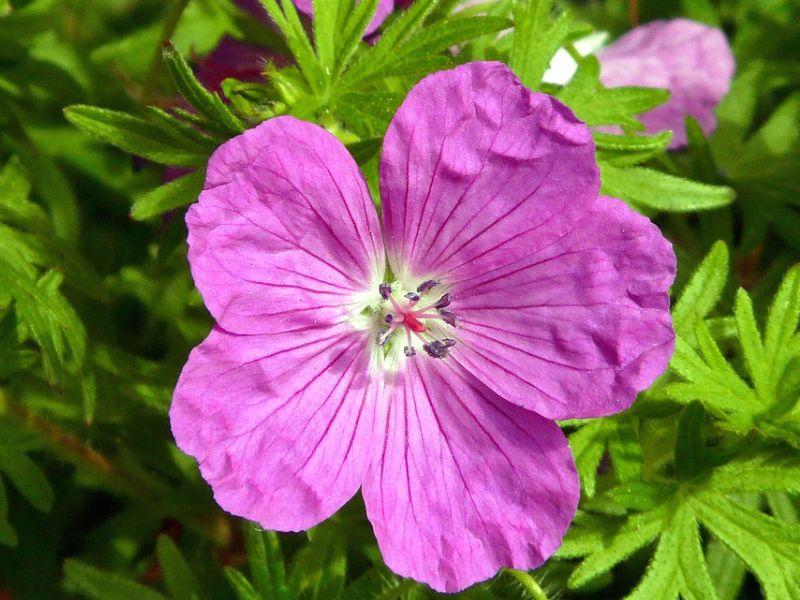
The biological form of Geranium sanguineum is hemicryptophyte, as its overwintering buds are situated just below the soil surface and the floral axis is more or less erect with a few leaves. It has a thick rhizome. The stems are prostrate to ascending, well developed, very branched and hairy. This plant reaches on average 30–50 centimetres (12–20 in) in height. The petiolate leaves have five lobes (or segments), each segment is tripartite in large teeth.
The flowers have a diameter of 2.5 to 4 cm. and are purple The flowering period extends from May through October. The flowers are hermaphrodite and pollinated by insects (entomophily). The most common flower visitors are Syrphidae and Hymenoptera, but also butterflies and Coleoptera. The fruit is a schizocarp that breaks up into five mericarps when ripe.
The typical habitat of this species is grassland, sand dunes and open woodland on calcareous soils, including rocky slopes. It prefers a neutral pH, with low nutritional value, at altutudes from 0 to 1,200 metres (0 to 3,937 ft) above sea level.
II. How to Grow and Care
Sunlight
The bloody cranesbill will grow stronger and will flower better when placed in a sunny spot. However, if it is growing in a hot place with direct sunlight, it needs proper shading and adequate moisture. In seasons where the temperature is lower than 4 ℃, plants should be moved indoors.
Temperature
The bloody cranesbill is mainly distributed in temperate and tropical mountainous areas. It prefers a warm and humid climate, but is relatively tolerant to cold and moisture. Make sure that the plant is never overexposed to the sun when maintaining it, keeping it in a cool and well-ventilated environment. It will begin to fall over if the temperature gets too high.
Watering
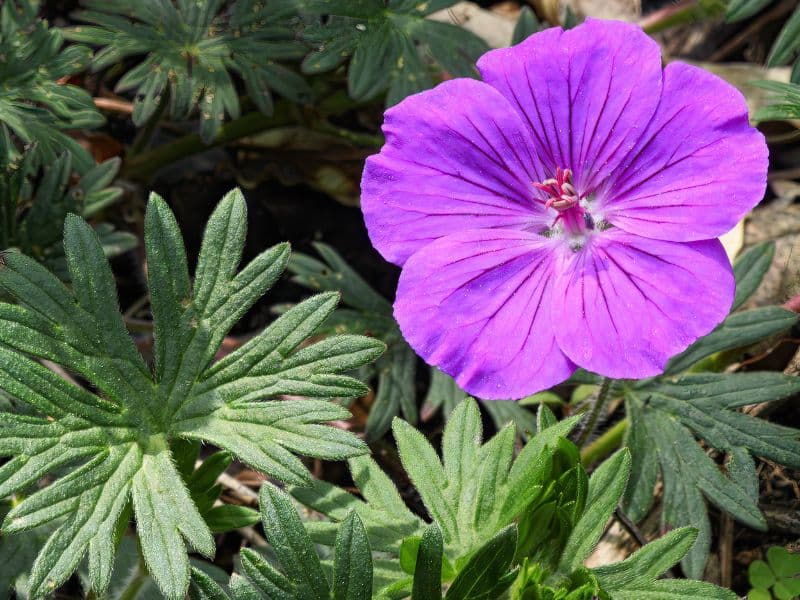
Native to temperate regions, bloody cranesbill thrives in environments that mimic its natural habitat’s moderate moisture levels. It is well-adapted to periods of low water availability, showing a preference for drier conditions and requiring watering once every 1-2 weeks. Given its outdoor growth habit, bloody cranesbill benefits from the cooling effect of evapotranspiration during hot seasons, making it an excellent candidate for gardeners looking to conserve water while maintaining lush landscapes.
Soil
The bloody cranesbill is not picky about the pH level of its soil, but this should ideally be neutral to slightly acidic (pH between 5.8 and 6.5). Its root system distribution is relatively shallow, making it suitable for planting in sandy soil. Loosening of the soil is required before planting, so that moisture and nutrients can quickly penetrate through to the roots, which also makes it easier for the roots to grow. Weeding is required at the same time when the soil is being loosened, otherwise the weeds will take up most of the nutrients in the soil.
Fertilizing
To boost bloody cranesbill’s growth and flowering, apply a balanced fertilizer (10-10-10) in spring and high phosphorus formula pre-bloom. Fertilize monthly during active growth, using 1/4 strength. Over-fertilizing can harm bloody cranesbill, so stick to recommended quantities. Fertilizer needs decrease in winter; pause applications. For effective application, water soil before adding fertilizer, ensuring nutrient absorption without root burn.
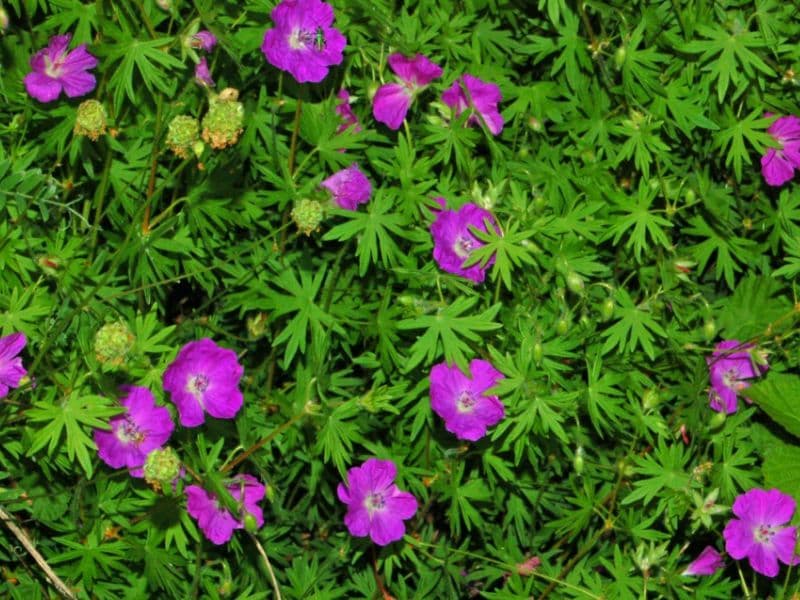
Pruning
The bloody cranesbill grows relatively slowly and requires only simple trimming. Large-scale pruning will affect the growth of the plant, and could even cause it to die.
Transplanting
The best time to transplant bloody cranesbill is mid-spring to early summer, or mid-fall to early winter when the plant has an easier time adjusting. Choose a well-drained site with an adequate sun-filled location. Just remember to keep the soil consistently moist during the first few weeks, ensuring a successful transition.
Repotting
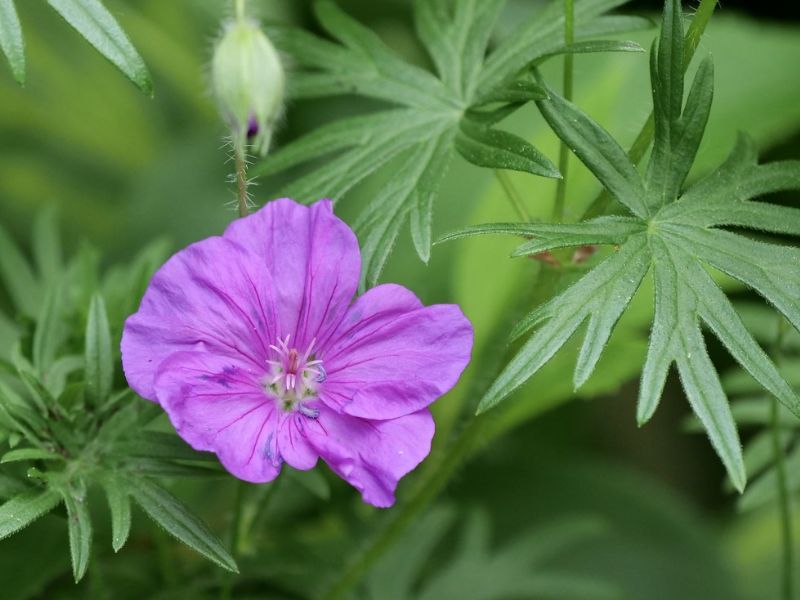
Repot bloody cranesbill as a low-growing, sprawling perennial every 2-3 years, ideally in spring to align with its growth cycle. Choose a wider container to accommodate the spreading habit. After repotting, water evenly and provide bright, indirect light to ease the transition and encourage vigorous growth. Bloody cranesbill’s resilience makes it a delightful yet undemanding garden companion.
III. Uses and Benefits
Bloody cranesbill (Geranium sanguineum) is a popular geranium prized for its attractively shaped leaves and vivid magenta flowers, which attract butterflies. This is a very easy-to-grow plant that has a spreading habit that makes it a great choice for edging and ground cover. It also makes a good addition to beds and borders in informal, traditional, and cottage gardens. For bright color contrasts, plant purple cranesbill, pearly everlasting, wood sage, and sea thrift nearby.
IV. Harvesting and Storage
Most of the bloody cranesbill varieties are seed bearing, with only a few that aren’t, making collecting of the seeds very convenient. For planting by sowing, the mature seeds should be collected.
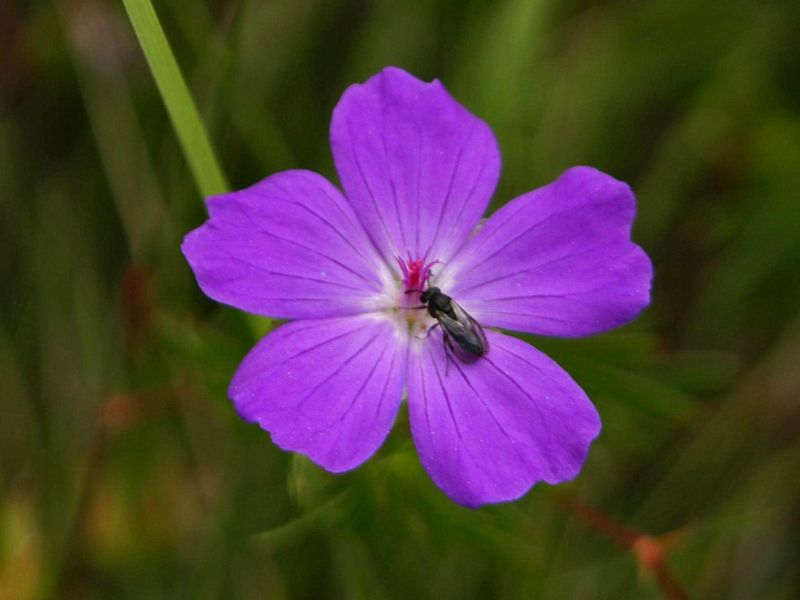
Its flowering period is in the summer, while its fruiting period is in late summer or early fall. Its seed pods will slowly change color when they begin to mature, and a part of them will begin to burst outwards. They can be collected in paper bags at this point, ventilated and dried, and the best seeds can be selected for storage.
When the fruit matures in summer and fall, the part above the ground can be cut off or be pulled up entirely. Clean off the soil and impurities and dry it in the sun to be used for medicinal purposes.
Find Where to Buy the Best Bloody Crane’s-bill (Geranium sanguineum)










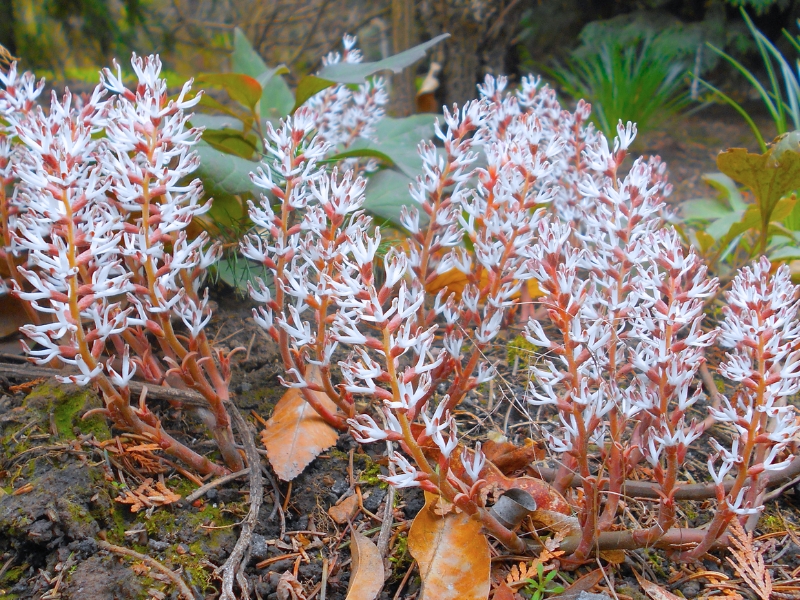

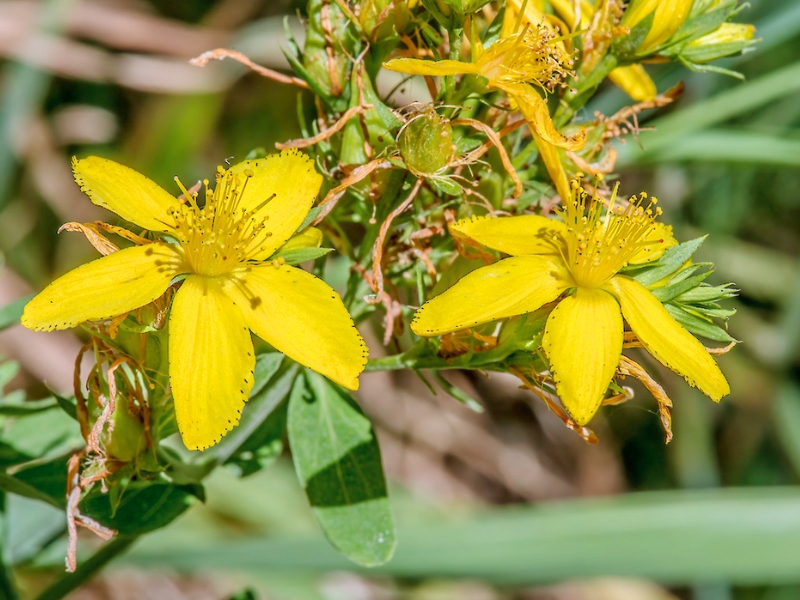
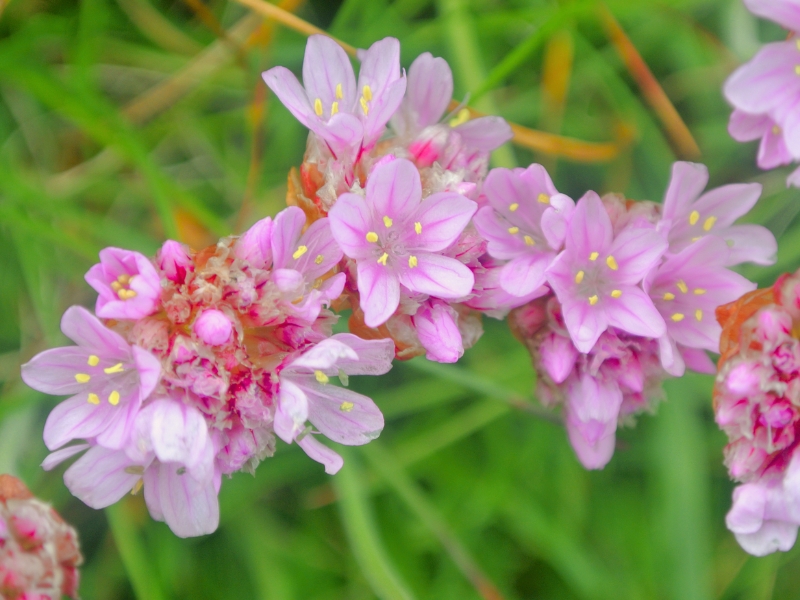
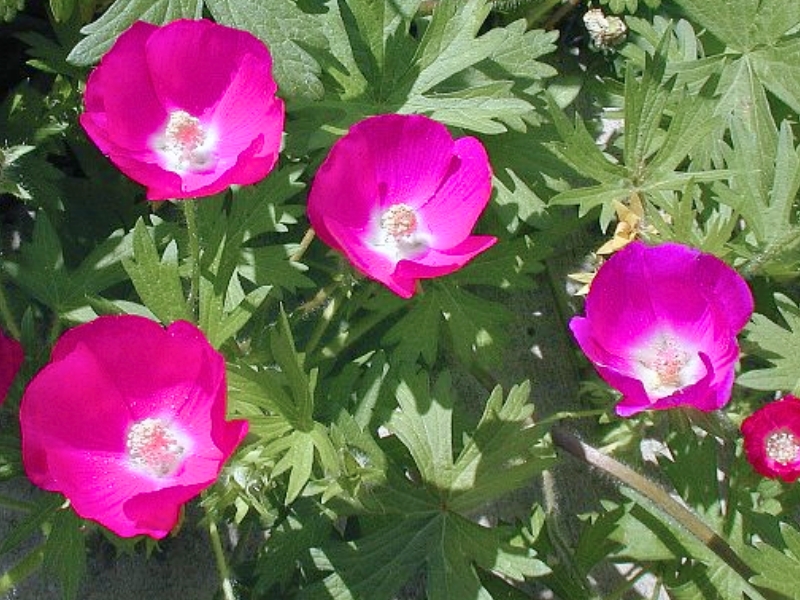
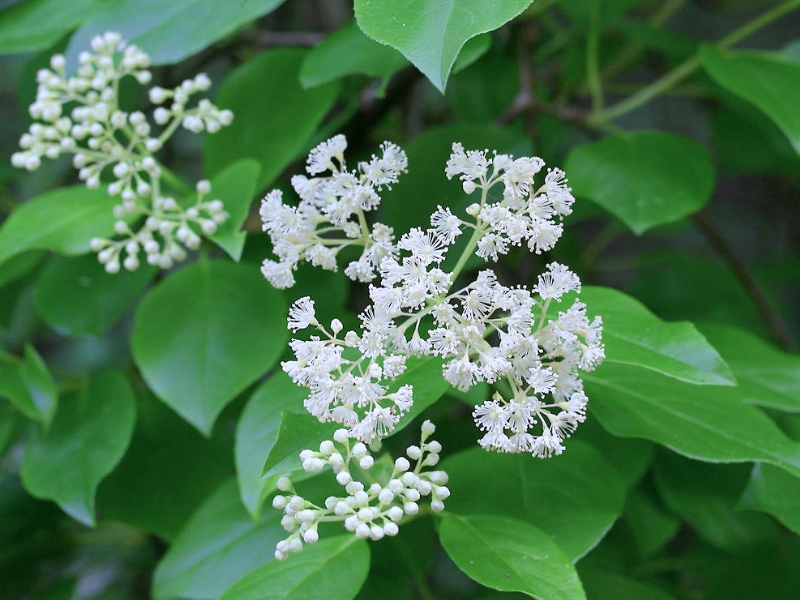
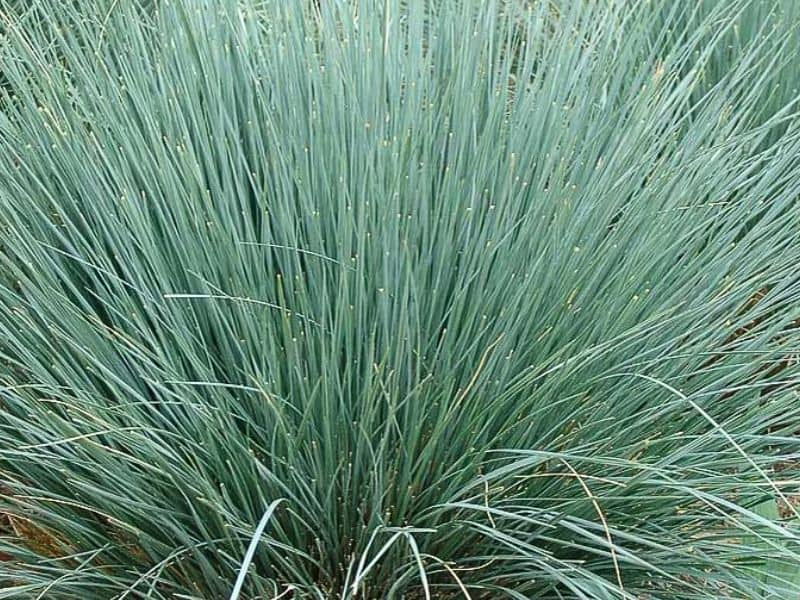
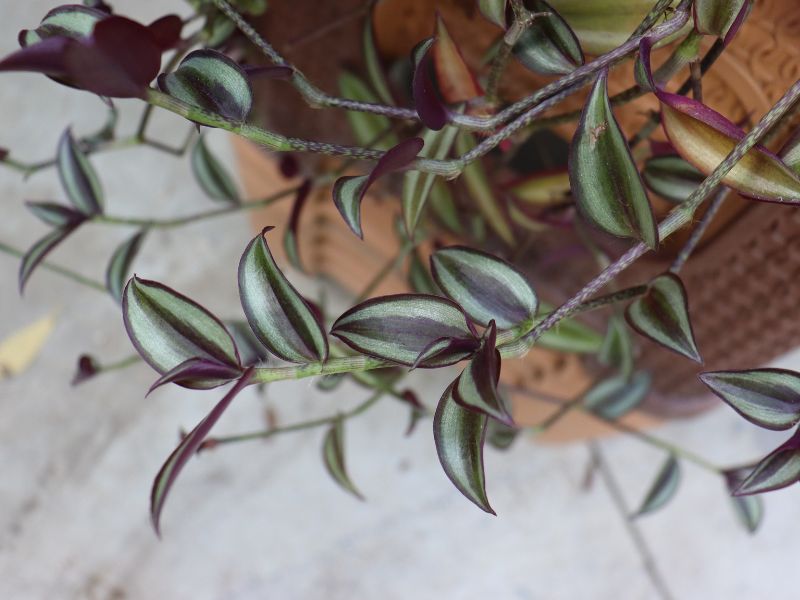
Leave a Reply